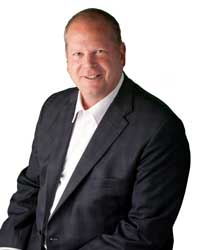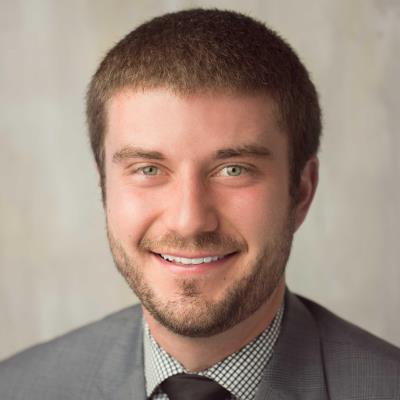After a virtual Prometheus awards last year, Technology Association of Iowa’s annual event is back in person tonight.
As well as recognizing individual companies, startups and people for their achievements, one community will receive the award of Tech Community of the Year for its work bringing businesses, residents and local government to the table for projects in areas like infrastructure, broadband and education.
Brian Waller, president of Technology Association of Iowa, said the work that communities do as a whole will be invaluable in the future.
“With the emergence of the “digital citizen,” Iowa communities that invest in technology infrastructure, education, innovation, entrepreneurship and privacy of citizens’ data will be the thriving communities of tomorrow,” Waller said in a statement.
Get to know the finalists before the event with highlights from their conversations with the Business Record.
The following conversation has been lightly edited and condensed for clarity.
Council Bluffs 2020 population: 62,799
Questions answered by: Drew Kamp, president and CEO of Council Bluffs Area Chamber of Commerce and Matt Walsh, mayor of Council Bluffs
Share some of the initiatives your community has implemented and how they’ve encouraged growth among businesses and the community.

Walsh: Approximately 15 years ago, we’d had some speculative insurance company investor that had built some buildings for resale, and their timing was pretty right because Google was looking for a new location and Council Bluffs had the appropriate infrastructure for that. We had plenty of electricity, we had plenty of water and we had fiber in the ground, which was primarily attributed at the time to Offutt Air Force Base. [Google] chose that location; I think it worked out well for them. Since then they’ve expanded dramatically, and their focus in the community is primarily for education of youth.
They came together with the school district and offered a large number of Chromebooks so that students each had a one-to-one relationship with an intelligent device, and then the problem was that Council Bluffs is a community that has a large amount of poverty so a lot of kids had a Chromebook, but their parents couldn’t afford access to the internet.
Google would annually give a six-figure donation to the city to use for its technology needs, and we had decided to put that to use to create some way for those households that didn’t have direct access to have free Wi-Fi access. We’ve built that out over the last eight years. It came in vitally important during the pandemic because it allowed children to learn from home. We ramped up those areas that we hadn’t yet completed. We’re not 100% complete throughout the town, but we are complete, I think, in the majority of those areas where those families, because of their financial situations, aren’t able to connect to the internet without the free Wi-Fi.
In addition to that, a vendor provider to Google, Cyrus One, has built out and opened a data center in Council Bluffs. So we’ve got good collaboration throughout the community, not only from those tech sources, but the Iowa West Foundation, which is the foundation affiliated with the casinos here in town, the Charles Lakin Foundation, which is another foundation whose primary interest is in youth. We got some money from a couple Omaha foundations that then the city and the school district helped set up the infrastructure and make it available to people.

Kamp: The mayor touched on how Google’s invested significantly in the community. I believe it’s about $2.5 billion they’ve invested in their facility alone. They’ve invested upwards of $3 million through their grant program that the mayor referenced since 2009.
It’s significant in not only the fees they’re paying and the wages and everything along those lines of employing 400 at the facility plus additional contractors and all the taxes and fees that go along with that, but then also the reinvestment in the community has been astronomical and Blink (which stands for Bluffs Link), the communitywide Wi-Fi system, has been a huge important part of that. It’s really serving some of the lower socioeconomic individuals. It’s in the school buildings as well, it’s in a lot of public spaces throughout the community. We have a lot of really nice parks and open spaces, and it’s available there. That’s a very nice amenity, as we look to continue to attract people to both grow our population, our workforce.
Was there a specific plan or initiative that started your community on this path?
Walsh: Every year Google would give the city some money to address its technology needs. When I became the mayor they said, “Here’s your allotment for the year. What do you want to do with it?” We decided it made sense to be more strategic, to partner to have a broader reach and with that reach to make sure that the technology actually worked. We went back and rewired three areas that weren’t working, and then we started to strategically, geographically grow the reach, and that’s taken eight years.
Kamp: I think one of the big things about when you’re looking at a project of this scale and this magnitude, from the start you really have to have all your ducks in a row. So not only was the city there and prepared, but then you have MidAmerican Energy, and you have all the other partners that come to bear to land a project such as this. They’re not going to look obviously at a location if you don’t have that framework in place.
Another thing that made it extremely attractive here is just the land itself. But the fact that back a couple of years ago, early 2010s, they passed a bill through the Legislature that utilized property tax assistance to really incentivize these kinds of projects as well. That was something with the low rates that Mid American and Berkshire and Engie are able to offer paired with that form of assistance made it very appealing for a company the scale and magnitude of Google to locate somewhere in Iowa.
What are key issues or needs in your community that technology initiatives have been able to address?
Walsh: The primary focus was education, on being able to let the kids get access to their lessons that were on their tablets. But obviously, as you can imagine, when when we first did it, we weren’t exactly sure that it would be able to penetrate the walls, as they talked about it. I had this vision of kids out on their front porch with fingers cut off their gloves, trying to tap out their homework, but it’s been proven, it’s effective, it penetrates into the home, it’s got enough bandwidth to do a variety of things, and so it not only benefits the students, but the citizenry in general.
The AIM Institute has come in on a regular basis into the junior highs and high schools, and focused on coding. Because there seemed to be an imbalance between male and female in coding Google actually has done some coding exercises and seminars for young junior high-age women.
Kamp: We’re actually partnering with [the AIM Institute] on a Google grant. AIM is putting it through the philanthropic side of their organization to do a tech certificate working with Iowa Western Community College to really impact the tech workforce in the community as well. That’s something we as the chamber with our workforce development program, is partnering with AIM on a joint application for a Google grant to then provide that tech training to get people through a certification process with the local community college, to then put them into the tech workforce.
What do you feel makes your community unique in terms of ways it can innovate to improve life and business in the area?
Walsh: We are in Iowa’s largest metropolitan area, population-wise. I’m a former commercial banker and spent a lot of time with nonprofit organizations, both on the Council Bluffs side and on the Omaha side, and I really think Council Bluffs is more open to collaboration. Oftentimes with organizations they seem to worry about someone else getting more advantage than they get, and so the ability to collaborate isn’t always there. I think Council Bluffs has recognized that we need to collaborate and so I think I know for a fact when you compare those two communities, you’ll get people from Omaha that’ll say they just envy us of how Council Bluffs is able to collaborate.
Kamp: We also have a couple things that make us unique. We have the casinos that are putting gaming revenue into our public entities that then can be reinvested out into the community to do good, obviously, for the citizenry. Then the Iowa West Foundation, that organization has invested over $500 million back in the community. There’s a one-to-one match, so it’s over a billion dollars back into the Council Bluffs and southwest Iowa community. That’s something that I think when you pair those things, plus the collaborative nature of our public, private and nonprofit sector, it allows you to do big projects like this with much more ease than it may be done in other communities.
What partnerships or efforts have made your community successful in its endeavors so far and what will help you continue that success into the future?
Walsh: I think those partners have recognized the value and so while some are in on certain phases, and not in on other phases depending on their budgetary constraints, the principles, who are the City of Council Bluffs and the Council Bluffs Community School District are steadfast in their support of it and the Iowa West foundation as well. If one nonprofit isn’t able to fund it, we’re able to find others who are. We spread out into Carter Lake, Iowa, which is part of the school district but a distinct city from Council Bluffs. During COVID we built out in into Carter Lake also, and that brought on some new donors because it was a different community.
Kamp: I think the biggest thing in that regard is just, s has been mentioned, all of these key partners all played an integral role, but we just continue to have conversations and continue to move the ball on this so it doesn’t ever fall to the wayside. This is something we talk about continually, whether it’s with myself, the mayor and others on the business community side of things, or I know there’s a group with the school district that talks about it quite regularly — the city, the school district, and their tech people also — it’s just an ongoing conversation, and it’s never lost, it’s never off the top of your of our minds. Especially as we continue to see some additional funds come in from the federal government, to local governments, school districts and such, we’re able to make sure that those coordinated efforts include projects like keeping Blink up to date and expanding into areas that it is not currently.